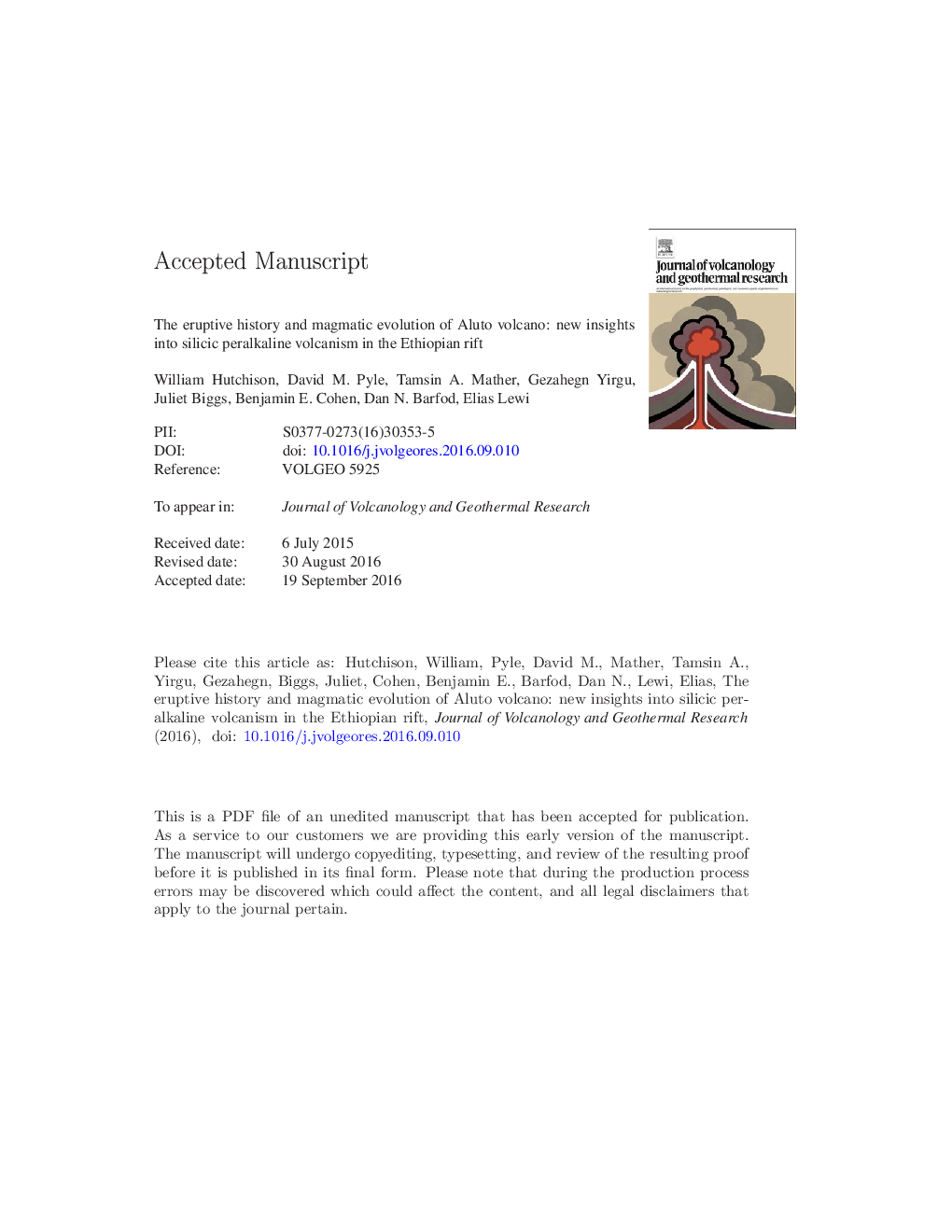| Article ID | Journal | Published Year | Pages | File Type |
|---|---|---|---|---|
| 5783904 | Journal of Volcanology and Geothermal Research | 2016 | 101 Pages |
Abstract
The silicic peralkaline volcanoes of the East African Rift are some of the least studied volcanoes on Earth. Here we bring together new constraints from fieldwork, remote sensing, geochronology and geochemistry to present the first detailed account of the eruptive history of Aluto, a restless silicic volcano located in a densely populated section of the Main Ethiopian Rift. Prior to the growth of the Aluto volcanic complex (before 500 ka) the region was characterized by a significant period of fault development and mafic fissure eruptions. The earliest volcanism at Aluto built up a trachytic complex over 8 km in diameter. Aluto then underwent large-volume ignimbrite eruptions at 316 ± 19 ka and 306 ± 12 ka developing a ~ 42 km2 collapse structure. After a hiatus of ~ 250 ka, a phase of post-caldera volcanism initiated at 55 ± 19 ka and the most recent eruption of Aluto has a radiocarbon age of 0.40 ± 0.05 cal. ka BP. During this post-caldera phase highly-evolved peralkaline rhyolite lavas, ignimbrites and pumice fall deposits have erupted from vents across the complex. Geochemical modelling is consistent with rhyolite genesis from protracted fractionation (> 80%) of basalt that is compositionally similar to rift-related basalts found east of the complex. Based on the style and volume of recent eruptions we suggest that silicic eruptions occur at an average rate of 1 per 1000 years, and that future eruptions of Aluto will involve explosive emplacement of localised pumice cones and effusive obsidian coulees of volumes in the range 1-100 Ã 106 m3.
Keywords
Related Topics
Physical Sciences and Engineering
Earth and Planetary Sciences
Geochemistry and Petrology
Authors
William Hutchison, David M. Pyle, Tamsin A. Mather, Gezahegn Yirgu, Juliet Biggs, Benjamin E. Cohen, Dan N. Barfod, Elias Lewi,
